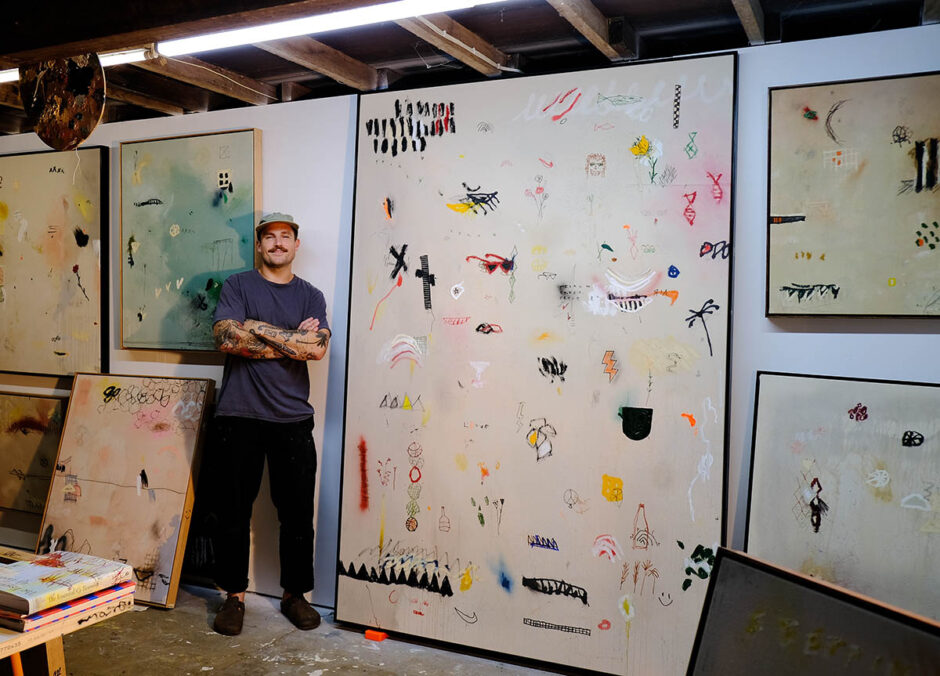
Currently residing in the Northern Rivers, Saxon’s work takes a cue from the asphalt sprawl streetscapes of cities around the world as well as the Australian countryside. Inspired by his travels and daily discoveries, his explorations use the medium of stained and marked canvas as a literal elucidation of the experienced environment. A narrative of monolithic shapes, line work of differing rhythm, geometry, space, and markings. Saxon has grown to love the process of distressing on surfaces that occurs over time; pavements worn by the pedestrian’s footsteps, weathering elements by nature, or human error.
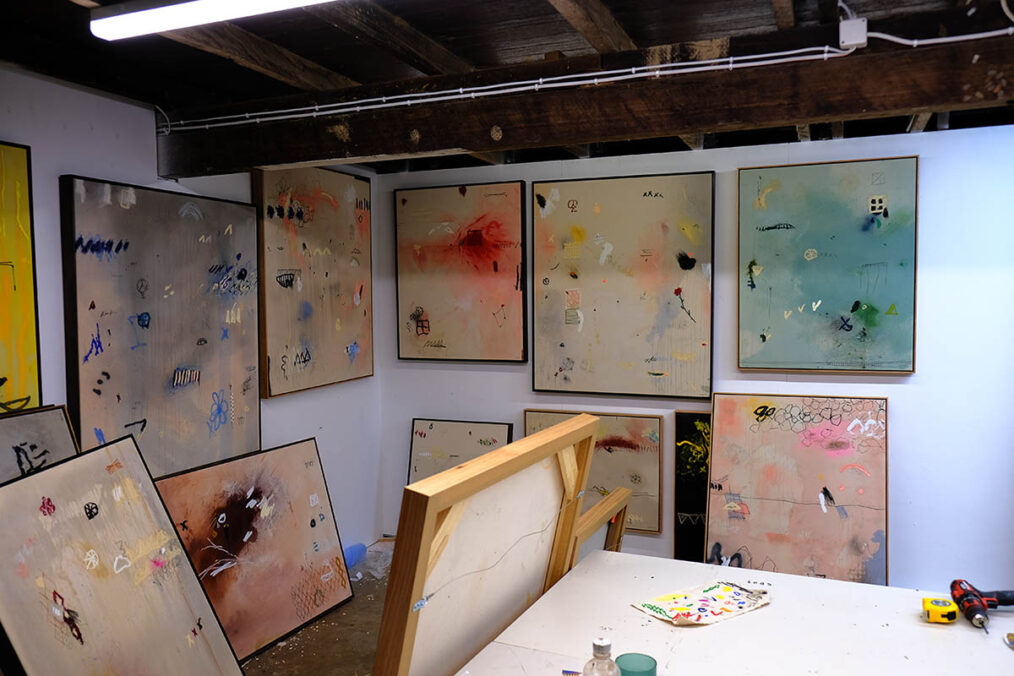
Artist. Saxon Quinn
Painting is my time to escape…In my otherwise cluttered and pinball-like mind, painting gives me the opportunity to stop, focus, relax and enjoy the process of creating. The more I paint, the more I feel that my works represent that balance. Amongst the rough and sporadic, there’s a sense of calm and balance. I want to continue to harvest this and express it.
What’s your background? What inspires you?
As per my intro – I am a self-taught artist with a background in Visual Design and fashion. Growing up in country Victoria, I was surrounded by art and creativity – My mum – Dianne Coulter, also an artist, has a large studio and gallery at our family home and has worked as a full-time artist from before I was born. My late father was a graphic designer and painter.
I get inspired by past experiences, influences, emotions, my mother and her artworks and everyday sightings.
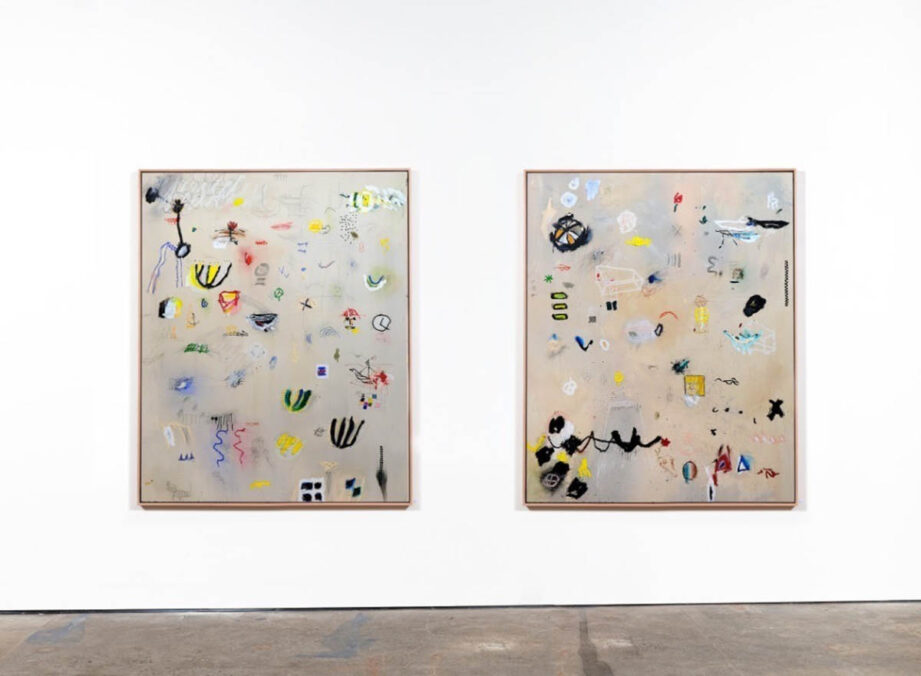
Saxon Quinn 
Saxon Quinn
Describe your process when starting a new piece of artwork.
I will only begin a new piece or paint in general if I have a clean slate – No other obligations, or distractions. I must also be in the right headspace (joyace and happy). I won’t paint if I’m feeling a little out of it, distracted, or in a shitty mood. If I’m starting a new body of work, I will generally wreck a couple of pieces to begin the process – A bit of a ritual for re-setting and blasting away any pent-up exploration that isn’t indicative of what I am striving for.
What are your biggest influences?
Past experiences and emotions play a big part, as do travel, music, family, and friends.
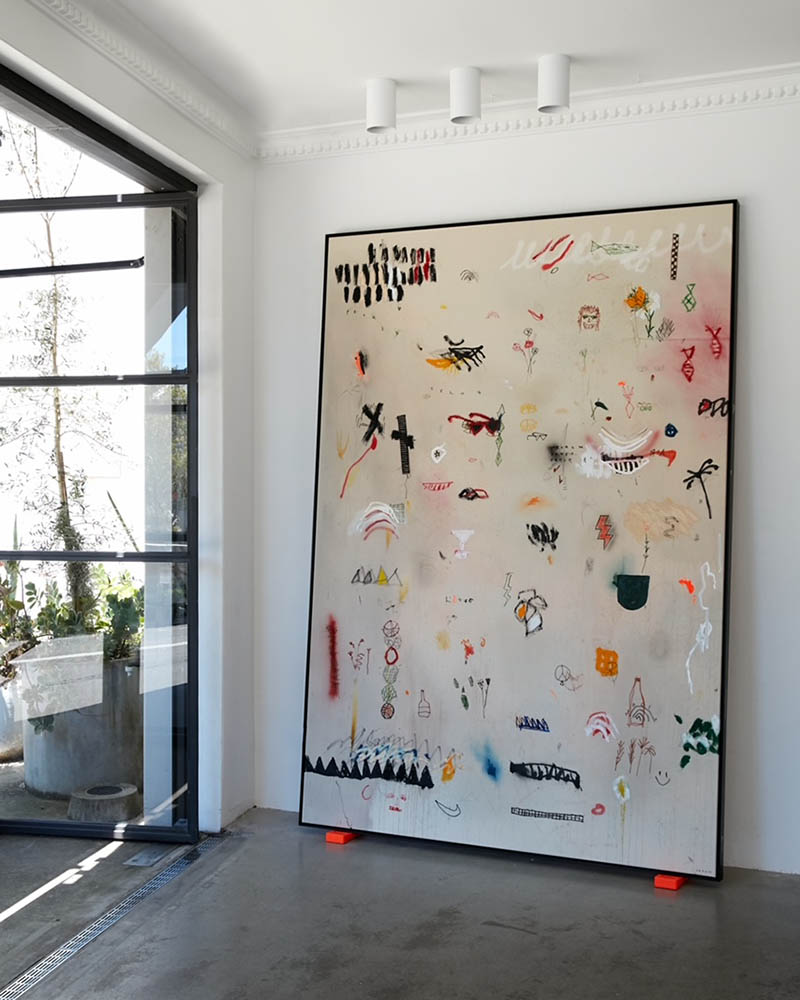
How would you describe your art?
Expressist/abstract works that play between the calm and chaotic movement and placement of marks.
What can you learn from children?
Freedom, happiness and excitement.
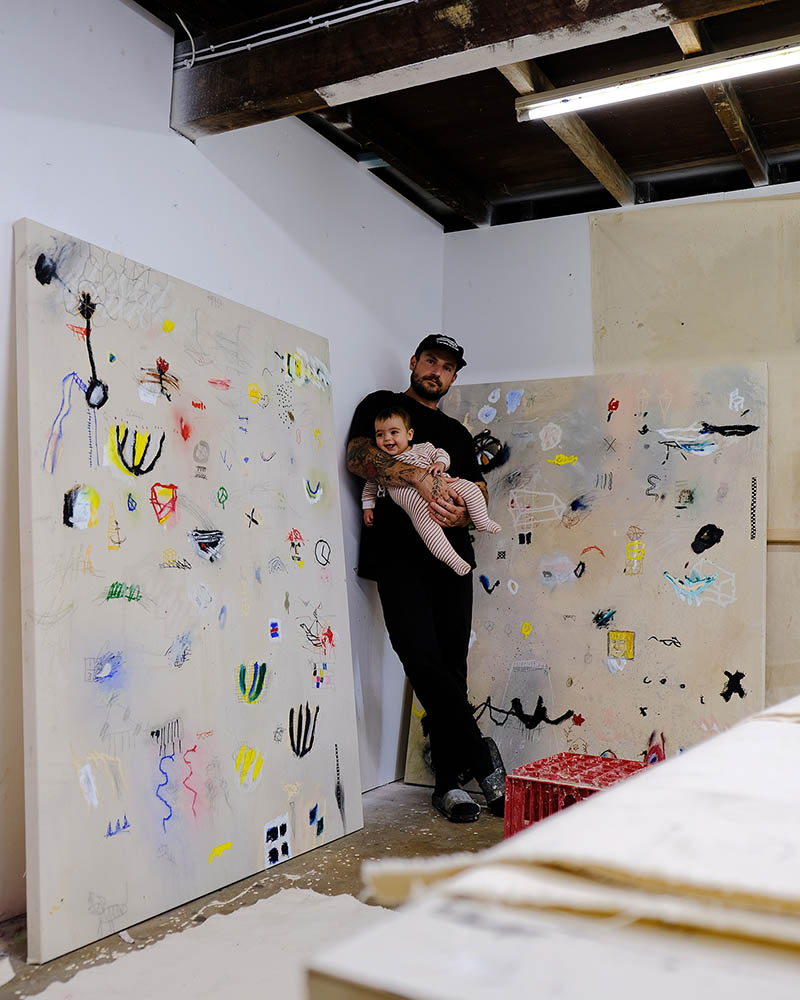
Trial & Error, Error. What do you show in your solo exhibition?
This show was the third of three with Saint Cloche and the largest body of work with the gallery yet – The body of work included a total of 20 paintings that were hung across two levels of the gallery.
Saxon Quinn – www.saxonjjquinn.com, www.instagram.com/saxonjjquinn/




